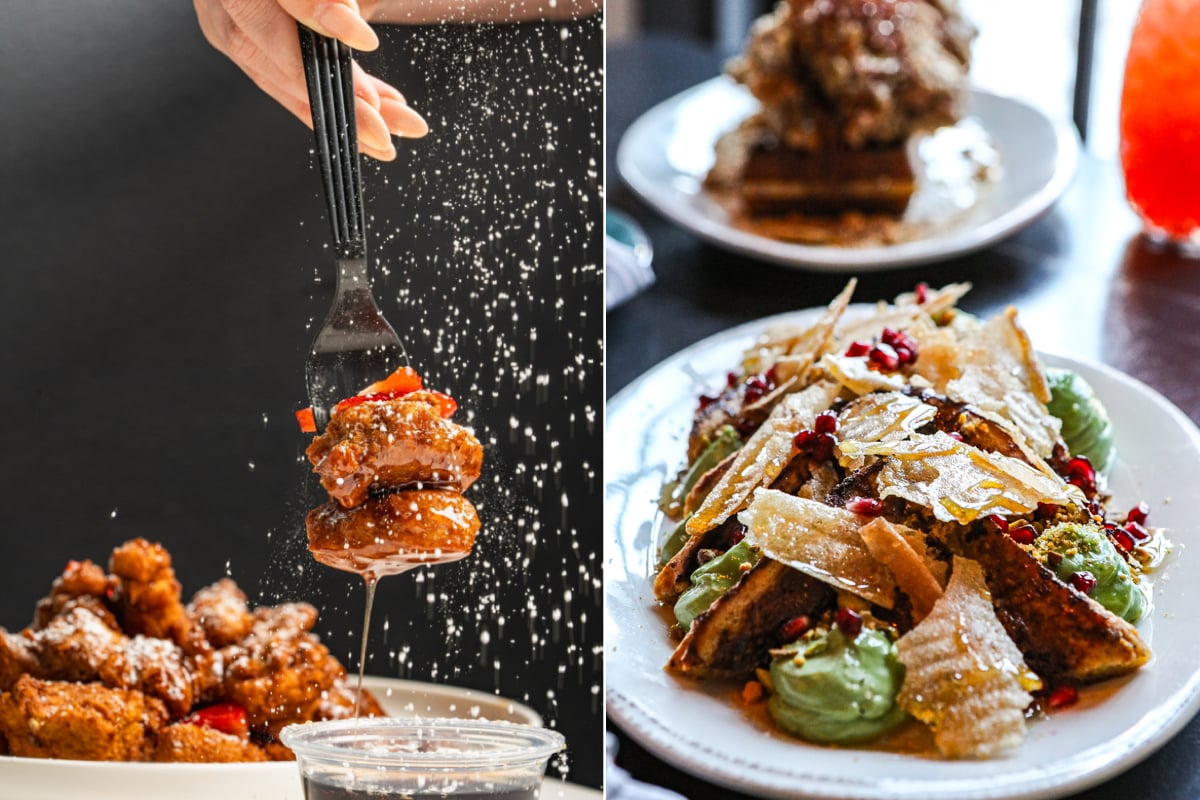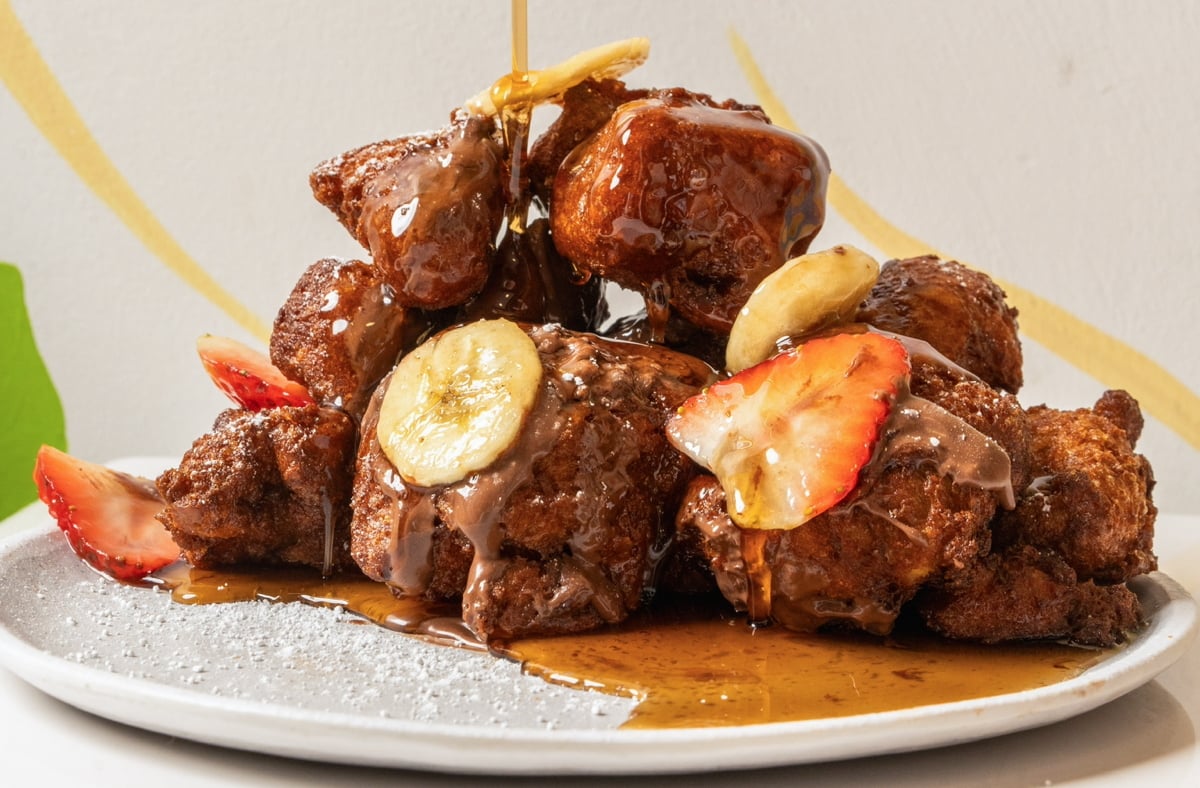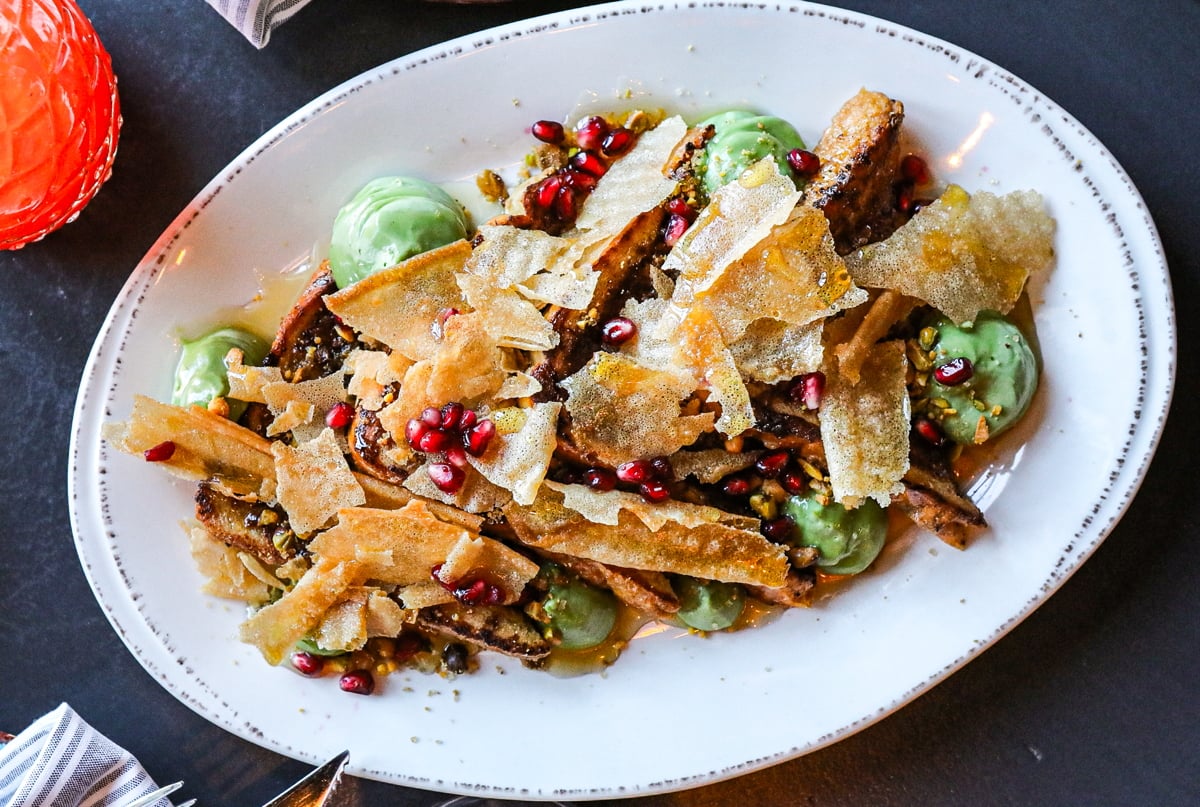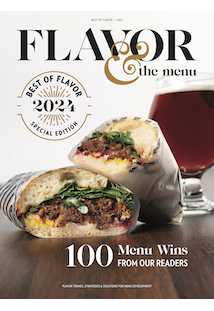
A Tale of Two French Toasts
One familiar and comforting, another worldly and complex
A Tale of Two French Toasts
One familiar and comforting, another worldly and complex
By Patricia Fitzgerald, Mike Kostyo and Nicole Duncan
October 16, 2024
By Patricia Fitzgerald, Mike Kostyo and Nicole Duncan
October 16, 2024
As chefs prove time and again, there is no single “right” way to build a specific dish. In fact, these varied approaches make the ideation process fun for menu developers and oh-so-scrumptious for guests. Fine-dining fare becomes more accessible through the addition of familiar ingredients (think: caviar atop tater tots), while casual eats are elevated through small tweaks, such as frying chicken wings in duck fat.
French toast may lean toward the comfort food category, but it also carries a slightly more sophisticated air than other sweet breakfast staples like pancakes and waffles. As a result, French toast works well dressed up or down—and sometimes the difference is as simple as a bread substitution. Plus, its relatively neutral taste all but begs for new flavor play.
This year’s Best of Flavor includes a pair of French toast offerings. One embraces comfort and fun, reformatting bread slices into small bites; the other combines the classic American dish with a beloved Middle Eastern dessert. Together, they demonstrate how differing paths can both lead to plated perfection.
 Photo Credit: Mitch’s Downtown Bagel Café
Photo Credit: Mitch’s Downtown Bagel Café Fluffy and crunchy at the same time, the French Toast Bites have been a runaway hit since Mitch’s introduced them in a soft rollout with free samples.
On the more playful side, Mitch’s Downtown Bagel Café in Fort Lauderdale, Fla., keeps the formula simple but takes the quality—of the ingredients and the experience—very seriously. “Complexity is unnecessary when everything is just right,” says Griffin Brackey, the café’s director of operations. “This is one of those dishes that speaks to the soul.” It also speaks to customer tastes, with Brackey only half-joking that the restaurant has trouble keeping up with demand.
These French Toast Bites begin with soaking small pieces of challah in a classic French toast batter with vanilla and cinnamon. Frying transforms them into fluffy, crunchy pillows. These morsels are then showered with powdered sugar and served with a generous helping of maple syrup.
 Photo Credit: Ryan Beshel
Photo Credit: Ryan Beshel Middle Eastern dessert meets American breakfast in this global spin on French Toast, with baklava ingredients and flavors, including pistachio, cardamom and rose.
The French toast at Medi Kitchen + Cocktail in Chicago also begins with challah bread but blazes its own path from that point onward. In keeping with the restaurant’s Lebanese cuisine, the Baklava French Toast introduces global intrigue and ingredients to a breakfast staple; it also illustrates how the ingredients and flavor profile of baklava can be used in different formats. “We bring the American comfort classic French toast to the flavors and textures of baklava to create a modern Middle Eastern-American dish perfect for brunch,” says Alexander Willis, corporate chef at Medi Kitchen.
To build this sumptuous sweet, challah bread is soaked in cardamom-rose royale custard and then seared in butter and arranged in classic triangles. Pistachios play a prominent role in both a creamy mousse and a crunchy crumble. A topping of fried phyllo dough is another nod to baklava’s influence. The dish is finished with pomegranate seeds and a drizzle of orange blossom honey. “Everyone absolutely loves the dish; it continues to be a best seller since being added to the menu,” Willis says.
These examples represent two possible approaches that, as different as they are, have won guest affections. Other global flavor systems offer similar opportunities. For example, French toast made with panettone and topped with whipped mascarpone evokes Italy, while milk bread fried in a Chinese five-spice-spiked batter hearkens to Asian cuisine. The format can also be reimagined; ditch the fork and knife, and present French Toast as a skewer with small toast triangles, fresh fruit and bites of honeycomb. No matter the preparation or presentation, French toast is ultimately a fun dish for out-of-the-box innovation.







